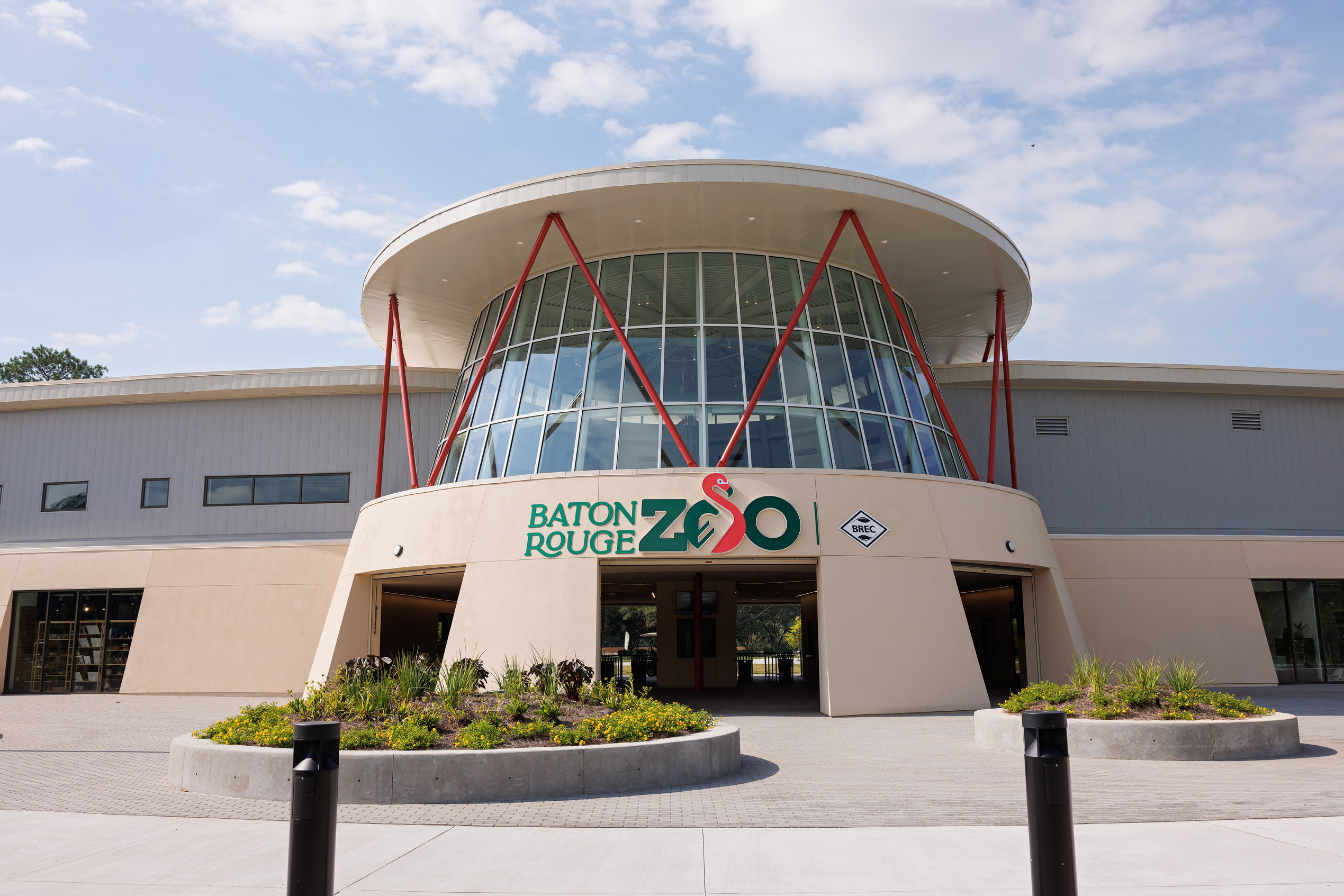
The Baton Rouge Zoo’s first phase of renovations are complete with new enclosures, giraffe feeding and more
Many remember the heated debates that centered around improving BREC’s Baton Rouge Zoo. Should it be rebuilt from scratch in the southeast part of the parish? Or should the zoo be improved in its original Baker location and better integrated with popular Greenwood Community Park next door?
The latter strategy was chosen in 2018, and this month, Phase One of the zoo’s improvements is officially complete.
The project included 12 new buildings and renovations to 11 exhibits, the most showy of which are new giraffe and pygmy hippo enclosures with better conditions for animals and more engaging viewing for visitors. Phase One changes also include the reopening of the Cypress Bayou Railroad and a new zoo entrance, says Director Jim Fleshman.
|
|

 “One of the biggest changes is the orientation of how people come through the front entrance because it’s going to seem like the back,” Fleshman says.
“One of the biggest changes is the orientation of how people come through the front entrance because it’s going to seem like the back,” Fleshman says.
The new zoo entrance is located within Greenwood Community Park off Highway 19 rather than on Thomas Road. The change reinforces the zoo and park as a synthesized site where visitors can enjoy a range of experiences.
Upon entering, guests will see the new giraffe enclosure, home to the breeding male, Rowan; the adult female, Rosie; and their calf, Reign. So far, the giraffes have been hesitant to leave their indoor stall for the new grassy expanse, but Fleshman says that’s normal.
“It’s a work in progress,” he says. “Being a species that’s predated (or hunted), anything that’s changed, they get very curious and cautious.”
Still, visitors can now feed the giraffes leaves of lettuce from an elevated boardwalk inside the enclosure with the purchase of an extra ticket—an interactive trend that’s become popular at zoos around the country.

The pygmy hippos exhibit has also seen significant improvements. Previously, the animals were in two modest concrete pools. Now, they frolic in a larger water feature with a glass wall, enabling visitors to watch them swim. Colobus monkeys are also part of the exhibit, with additional primates to join soon, Fleshman says. This demonstrates the zoo’s new organizing principle of grouping animals by geography rather than taxonomy.
“This allows you to see what a real West African river habitat might look like,” he says. brzoo.org
This article was originally published in the August 2024 issue of 225 Magazine.
|
|
|
